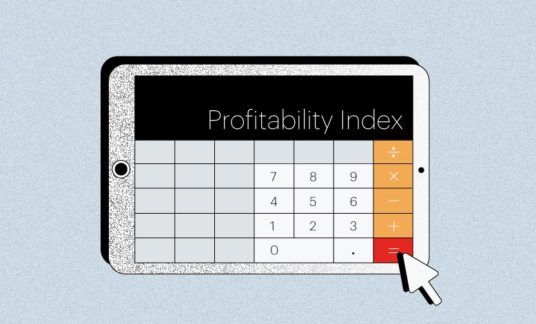Starting an import and export business is demanding but rewarding.
The internet has changed everything. The web has opened doors to trade in a way that had never been possible before.
The import and export industry isn’t just for major companies, either. About 70% of all exporters have less than 20 employees, according to SBA.gov.
Let’s walk through the process of starting an import-export business.
1. Set Up Your Business
Name Your Import and Export Venture
You’ll need to decide on a name and make sure it isn’t already being used. You can do this online for free at the U.S. Patent and Trademark Office or through your state’s secretary of state office.
For most small businesses, you can register it through your state and local government. You also will need to obtain any required business licenses. Keep in mind some municipalities have specific rules for businesses that work out of your home.
If you’re using your name as the business name, you won’t need to register it. However, there are legal and tax benefits as well as liability protection when you create a separate legal entity.
Secure Your Tax ID Number
After you’ve registered your name, determine if you need a federal tax identification number. You can find out whether you need an employer identification number and apply for one through the Internal Revenue Service.
Doing Business Across State Lines? On the Web?
There are factors to consider if you plan to sell across state lines. You may need a registered agent in your state before filing. The Small Business Administration can help you determine what you need to do.
If you are going to use a website, you will want to make sure the domain name hasn’t been taken already. Start with InterNIC from the U.S. Department of Commerce.
Also, establish social media accounts you want for your import-export business.

2. Choose Products to Import or Export
One of the most important things you’ll need to do is select the products you want to sell. It helps if it’s something you are passionate about or have a good idea of whether you can make a reasonable profit.
One significant concern to address: What makes your product or your business different from your competitors?
As you look for ideas, you’ll want to spend time researching your target market. Note there will be different strategies if you aim to sell something online directly to consumers using eBay, Shopify or Amazon versus if you want to sell to businesses.
You can get some assistance assessing import and export business ideas with the Market Potential Index and the International Trade Administration.
3. Find Your Suppliers
If you can’t create the product yourself, you’ve got to get it from somewhere. The websites of Alibaba, Global Sources and Thomasnet.com are good places to look for suppliers.
These sites can give you an idea about pricing and help you determine profit margins based on sales.
4. Determine the Pricing
Pricing is one of the most critical decisions you’ll make when you’re starting an import-export business. Go too high and you may price yourself out of the market. Price too low and you may not be able to pay the bills.
In determining price points, you will want to look at the volume of sales and the profit margin on individual units. The difference between what you buy a product for and what you sell it for is known as markup.
Typical import and export businesses markup products between 10% and 15% over wholesale cost.
5. Find Your Customers
It’s great if customers can find you online, but organic traffic to your website doesn’t happen by accident. Using search engine optimization practices and a mix of paid search ads, social media ads and more typical advertising and marketing techniques may be necessary to target your potential customers.

6. Figure Out the Logistics
You’ve got a few choices to make and it likely boils down to costs.
You can choose to import products to your location in bulk and then fulfill orders yourself. While you can try to deal with the logistics, the process can become complex depending on where your products come from and where they are being sold.
Freight Forwarders
Freight forwarders can help cut through the red tape with foreign countries and suppliers. You’ll have to pay them, but they can function as intermediaries and handle getting freight back and forth.
Dropshipping
Another option is dropshipping. In this scenario, you don’t keep products in stock or buy them in advance. When a product sells, you purchase it from a third-party that ships them directly to the puchaser.
7. Build Your Business Plan
You will need to develop a company business plan for importing and exporting goods and services. This acts as a guide for how you’re going to build your business – is necessary if you need to line up financing.
Lenders will want to review your business plan before making an investment in your import and export business.
A business plan should cover 9 essentials:
1. Executive Summary
Basic information about your company, your location, your leadership team and your growth plans.
2. Company Description
Detailed information about your company and what it plans to do. For example, what niche are you trying to fill? Explain any competitive advantages that will help you be successful.
3. Market Analysis
Explain the industry outlook and your target market. Assess the strengths and weaknesses of your competitors in the space and how you plan to make your mark.
4. Organization and Management
Here you will describe the legal structure of your business. If you have employees or team members, you will want to include an org chart.
5. Product Line
Explain what products you’ll be importing or exporting and how it benefits your customers.
6. Marketing and Sales
Write a brief marketing plan to demonstrate how you plan to attract and retain customers.
7. Funding
If you need outside investment or loans to start your business, you will need to explain why you need it and what you plan to do with it. A typical business plan covers financial needs over a 5-year period.
8. Financial Projections
Produce a prospective financial outlook for the first 5 years of your company. Include forecasts for income statements and balance sheets. Detail any investments or funding you need and expenses you will have.
9. Appendix
Provide any supporting documents and include copies of any licenses, registrations, permits or contracts.
Diving Into the Import-Export Business
Indeed, the import and export industry is attractive. Total trade in the U.S. topped $4.14 trillion in 2019, according to Statista. Some $2.5 trillion of goods and services were imported and $1.65 trillion were exported.
Starting an import-export business might feel a little overwhelming but it doesn’t have to be. By following precise steps and developing a clear plan of action, you’ll be one step closer to emerging in the industry.











